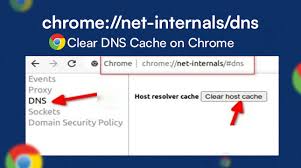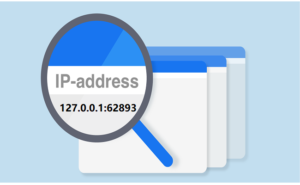nderstanding chrome://net-internals/dns: A Comprehensive Guide

nderstanding chrome://net-internals/dns: A Comprehensive Guide
Google Chrome offers a powerful set of internal tools for troubleshooting and optimizing your browsing experience. One of these tools is `chrome://net-internals/dns`, a feature designed to help users manage and diagnose DNS (Domain Name System) issues. This article provides an in-depth look at what `chrome://net-internals/dns` is, how to use it, and its benefits for troubleshooting network problems.
What is chrome://net-internals/dns?
`chrome://net-internals/dns` is a special internal page in Google Chrome that allows users to view and manage DNS information related to their browsing session. DNS is a critical component of internet connectivity, translating human-friendly domain names (like www.example.com) into IP addresses that computers use to communicate. This tool provides detailed insights into how Chrome handles DNS queries and responses.
How to Access chrome://net-internals/dns
To access `chrome://net-internals/dns`, follow these simple steps:
1. Open Google Chrome: Launch your Google Chrome browser.
2. Enter the URL: In the address bar, type `chrome://net-internals/dns` and press Enter.
3. View the Dashboard: You will be directed to the DNS internals dashboard, where you can explore various DNS-related functions.
Key Features of chrome://net-internals/dns
1. DNS Cache Information
The DNS cache is a temporary storage area where domain name resolutions are kept. This cache helps speed up the loading of frequently visited websites. On the `chrome://net-internals/dns` page, you can view the contents of this cache, including domain names and their corresponding IP addresses. This information is useful for diagnosing issues related to outdated or incorrect DNS entries.
2. Clear DNS Cache
If you’re experiencing problems with website loading or suspect DNS issues, clearing the DNS cache can help. On the `chrome://net-internals/dns` page, there is an option to clear the DNS cache. This action forces Chrome to fetch fresh DNS information, potentially resolving connectivity problems.
3. DNS Query Logs
For advanced users and network administrators, the DNS query logs provide detailed information about DNS queries made by Chrome. This feature can be invaluable for diagnosing complex network issues or understanding how DNS requests are being handled.
4. DNS Prefetching Status
Chrome uses DNS prefetching to speed up the browsing experience by resolving domain names before you actually visit them. The `chrome://net-internals/dns` page shows the current status of DNS prefetching and can help you understand its impact on your browsing performance.
Troubleshooting with chrome://net-internals/dns
1. Resolving Loading Issues
If websites are not loading correctly or displaying errors, checking the DNS cache and clearing it can often resolve the issue.
2. Diagnosing Slow Connections
Slow website load times might be related to DNS resolution issues. By reviewing DNS query logs, you can identify any delays in domain name lookups and take appropriate action.
3. Checking DNS Prefetching
If you suspect that DNS prefetching is causing problems, such as excessive network activity or conflicts with other extensions, you can review and adjust its status on the `chrome://net-internals/dns` page.
Conclusion
The `chrome://net-internals/dns` tool is a valuable resource for users looking to understand and troubleshoot DNS-related issues in Google Chrome. By exploring its features and using it to diagnose network problems, you can enhance your browsing experience and ensure a smoother connection to your favorite websites.






